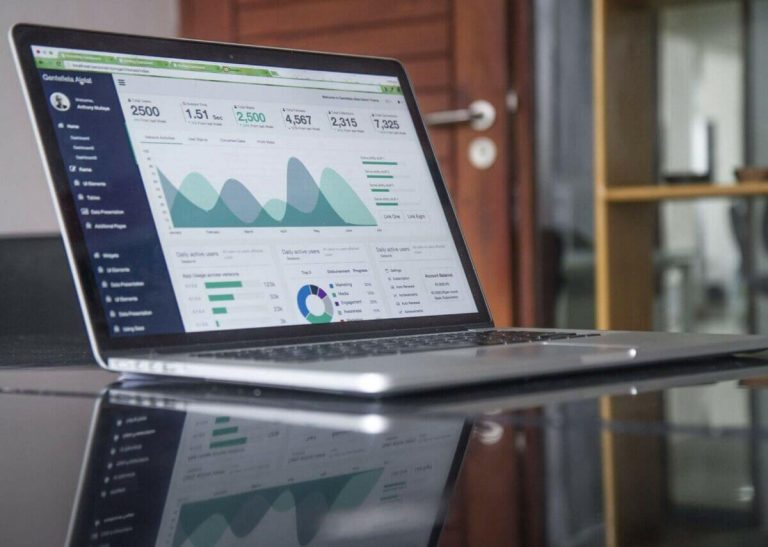Advanced Data Analytics: New Insights in Forex Trading
The global foreign exchange, better known as the forex market, is one of the largest and most liquid financial markets worldwide. They are known for being an incubator of innovative new ideas, with advanced data analytics becoming an invaluable asset to foreign exchange traders due to advances in digital technology allowing traders to gain new insights and make accurate predictions.
Data analytics provide traders with the competitive edge needed to succeed in an industry with such high stakes that winning or losing can equal millions of dollars. One such tool that gives traders more power in this regard is metatrader 4. This platform has made market analysis possible on an advanced level while simultaneously offering automated trading facilities, allowing traders to carry out their strategies more precisely.
Change in forex trading environments
Data from the Bank for International Settlements indicates that daily foreign exchange transactions totaled an astounding $6.6 trillion in 2021. Due to foreign exchange’s ever-evolving environment, simple price charts and keeping up with current events no longer provide good insight into its tendencies, patterns, or trading potential – data analytics has become an indispensable tool in uncovering such market tendencies, patterns, or possibilities for trading. With metatrader 4, traders can instantly analyze the change in trading environments.
Advanced data analytics: role and importance
Understanding market sentiment analysis
Forex traders frequently attempt to assess market emotion by trying to ascertain other traders’ dispositions. Interpreting and categorizing the feelings expressed in sources like news stories, social media messages, or any text data publicly available is all part of sentiment analysis that forms part of sophisticated data analytics.
Studies conducted by the Journal of International Money and Finance have found that applying sentiment analysis to news stories can give traders a predictive edge when trading foreign exchange. However, traditional methods alone cannot achieve the same degree of market sentiment analysis efficiency and accuracy.
Identification of market patterns (PDF)
Advanced data analytics allow traders to uncover previously concealed market trends through sophisticated data analysis. Human observers are often overwhelmed by all of the data in the forex market and tend to miss trends; however, algorithms used in machine learning excel at pattern detection to uncover tendencies that might otherwise go undetected.
An expert from one of the premier trading analytics firms highlighted this benefit by explaining that their machine-learning algorithm could detect minor patterns in GBP/USD that were invisible to human traders. This advantage enabled their customers to engage in profitable trades by taking advantage of opportunities they otherwise wouldn’t have been exposed to.
Implement predictive modeling today
Foreign exchange trading can reap great advantages from advanced data analytics in predictive modeling. With its assistance, traders can construct mathematical models that predict future market movements based on past information.
Quantitative Finance recently published an article detailing how predictive modeling has increasingly relied upon sophisticated statistical methods like auto-regressive integrated moving averages (ARIMA) and support vector machines (SVM), with results being far superior to standard trend-following tactics.
Future of forex trading and data analytics
Advanced data analytics has completely revolutionized foreign exchange trading by providing more informed decisions, managing risks more efficiently, and discovering lucrative possibilities more readily than before. It should become even more prominent as technologies for gathering information advance and computer power becomes more widely accessible and affordable.
Implementing quantum computing capabilities into data analysis could be the next step in expanding the foreign exchange market. Quantum computers can handle vast volumes of information at unthinkable speeds, leading to the potential development of predictive skills that could revolutionize trading practices on foreign exchanges.
Leveraging artificial intelligence
Artificial intelligence and machine learning tools have emerged as essential elements in today’s world of advanced data analytics, enabling companies to sift through massive databases for useful insights while making predictions with incredible precision.
Machine learning algorithms are designed to extract new knowledge from data and continually improve. Foreign exchange trading provides an ideal opportunity to observe past price movements, recognize patterns, and predict the direction of future trends using machine learning strategies such as neural networks and random forests that have proven accurate predictions on foreign exchange markets – this was evident from an article published in Journal of Financial Markets.
Artificial intelligence can also assist Forex traders with managing the immense amounts of data available to them, according to an AI trading company spokesperson: “AI systems can read and interpret thousands of financial reports, news articles, and social media posts in far less time than it would take a human trader.”
How big data impacts forex trading
Big data has proven a game-changer for forex trading. Now more than ever, forex traders rely on all types of data sources ranging from financial news feeds and real-time market data feeds to posts shared across social media and posts made on financial forums.
This shift has resulted in new approaches and methods of analytical research. For instance, traders increasingly turn to sentiment analysis of news stories and social media posts to gain insights into market patterns. Such research was highlighted in an International Journal of Financial Studies study.
High-frequency trading on the forex market
Advanced data analytics in foreign exchange trading goes far beyond forecasting long-term market trends. Companies engaging in high-frequency trading (HFT) employ algorithmic strategies to complete large numbers of trades in short order.
Financial Times articles indicate that high-frequency trading (HFT) businesses account for much of the daily trading activity in the foreign exchange market, exploiting minute price differences and market inefficiencies by employing cutting-edge data analytics techniques.
Cybersecurity and data analytics in forex trading
Security in the foreign exchange market has become increasingly prioritized with the proliferation of data-driven trading tactics, necessitating cybersecurity measures to protect sensitive information and ensure trade systems uphold their integrity.
Advanced data analytics plays an integral part in cybersecurity. According to one company specializing in this area, algorithms that learn from machine data can detect anomalous patterns of activity that could indicate an impending cyberattack. One representative from one such firm stated, “Our AI-driven system can quickly recognize potential threats and take preventative actions immediately – significantly decreasing the risk of successful cyber attacks.”
Final thoughts
The forex trading industry is experiencing rapid transformation. The introduction of more advanced data analytics has opened up new doors of opportunity for traders. It is clear that those able to leverage data effectively will lead exciting and lucrative businesses into their next incarnation.
The post Advanced Data Analytics: New Insights in Forex Trading appeared first on FinanceBrokerage.



